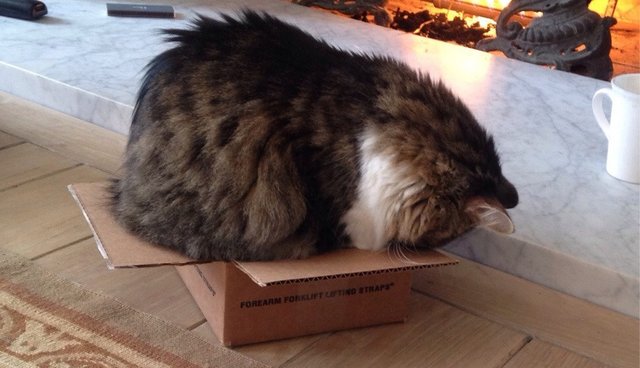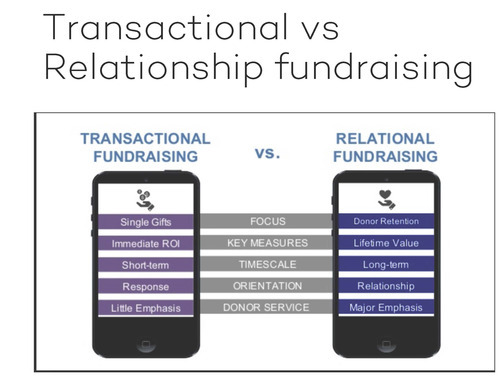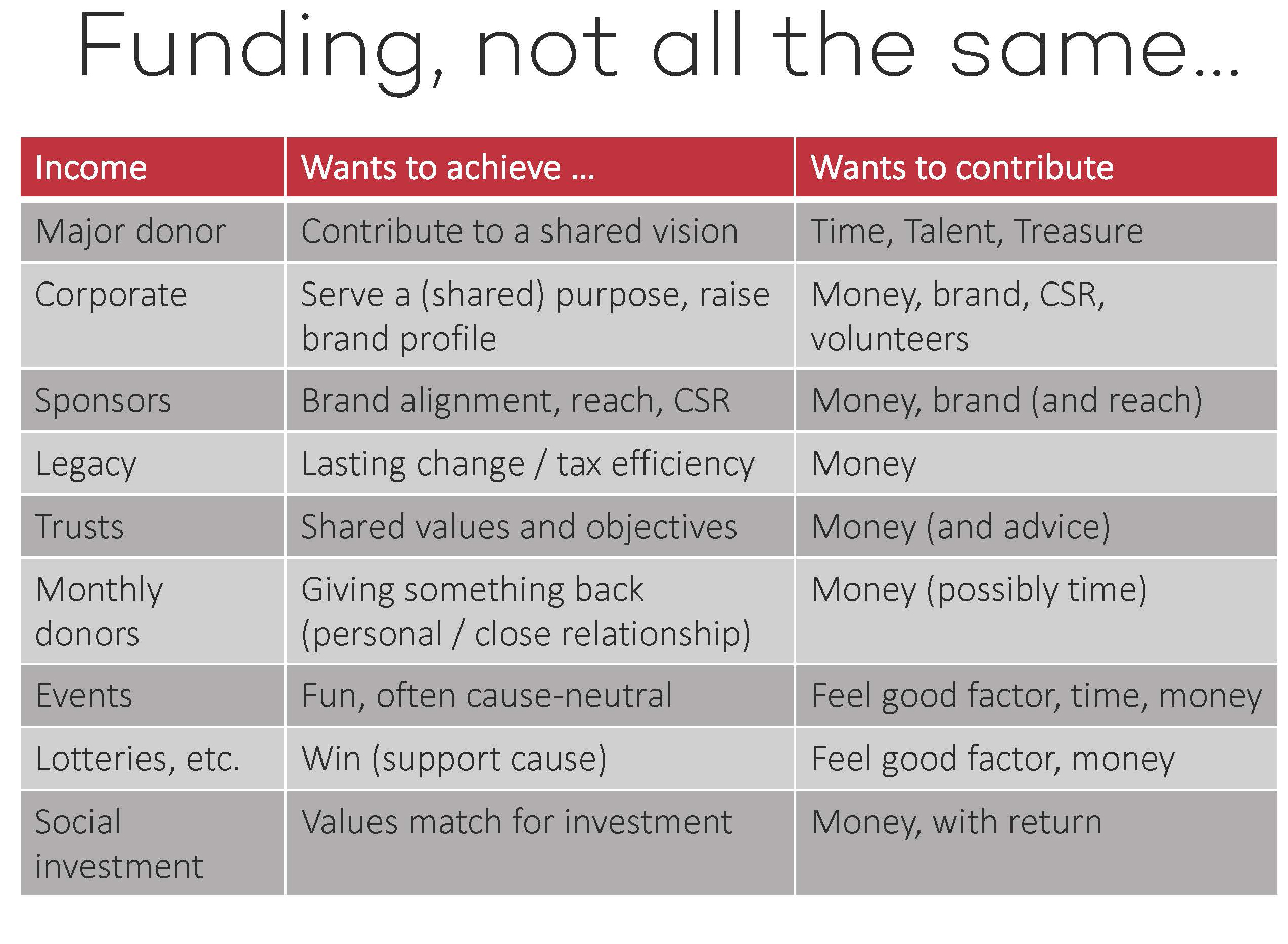Friday
Jun142019
Income Generation in Charities - Money's Too Tight to Mention?
 Friday, June 14, 2019 at 6:52PM
Friday, June 14, 2019 at 6:52PM A Spring Thursday night in Cass Business School and a crew of WCoMC members joined two pro bono clients for a frank discussion on income generation, chaired by the inimitable Patrick Chapman (Chair of Pro Bono) and supported by our wise counsel Natasha Roe (communications, marketing and fundraising guru) and Rebecca Maynard from StreetVet.
Plus ca change? It is no surprise a number of the issues raised had been covered in our “Strategy for charities – start where they’re at....” seminar in 2014 [1].
The session was introduced highlighting ‘money is tighter’ [2] and funders and donors of all kinds are asking more for their financial contribution.
 From a strategic perspective, charities (and indeed smaller non-profit community groups) had three choices: maintain the same size and service, grow/develop or wind up. These decisions should always be made in the context of meeting the needs of beneficiaries (clients) but too often there was a relentless desire to grow (and on occasion, to fulfil the needs/egos of specific trustees). We identified the need to see the bigger picture, position effectively in the marketplace and better present our charities to funders, especially when our organisations are ‘different’ and don’t fit in the box.
From a strategic perspective, charities (and indeed smaller non-profit community groups) had three choices: maintain the same size and service, grow/develop or wind up. These decisions should always be made in the context of meeting the needs of beneficiaries (clients) but too often there was a relentless desire to grow (and on occasion, to fulfil the needs/egos of specific trustees). We identified the need to see the bigger picture, position effectively in the marketplace and better present our charities to funders, especially when our organisations are ‘different’ and don’t fit in the box.We also recognised that there might be occasions when the best decision was to wind up operations and hand over responsibilities elsewhere but that this shouldn’t be a knee jerk reaction.
What Makes a Small Charity Viable?
Viability could be articulated as a simple equation:
“Viability = business model + impact + communications clarity”
Organisations don’t need to constantly grow – delivering and meeting objectives at a specific level is fine. Small (or medium) is beautiful indeed. Funding applications (of all types) provide a discipline to help us think through why we’re needed and what difference we can best make and at what level. All organisations need to have a USP (unique selling point) and accompanying clear elevator pitch (ideally not the length of the Burj Khalifa). If you’re still talking when I leave the elevator you’ve got it badly wrong!
 We also identified that grass roots organisations (often small and sometimes the most fragile) are the direct link to the most marginalised in communities in a way the large charities can never effectively reach. So small is important, even allowing for the challenges of fragility.
We also identified that grass roots organisations (often small and sometimes the most fragile) are the direct link to the most marginalised in communities in a way the large charities can never effectively reach. So small is important, even allowing for the challenges of fragility.Is Sales a Dirty Word?
There was some debate about use of the word ‘sales’. Whilst the more commercially oriented amongst the audience saw ‘sales’ as analogous to ‘fundraising’, there are rather important nuances. Firstly, it’s not all about the money (despite what Meja might say - video below if you’re interested [3]). Secondly, relationships might generate other connections and referrals beyond cash.
Transactional vs relational, Peeing in the Wind and Brand Car Crashes
 Transactional fundraising might generate some quick cash but was unlikely to be sustainable. A bit like flogging off your services and not caring about the quality because there’s a new customer round the corner. The key was to transform those interactions into relationships, to retain donors and build a lifetime value. NSPCC learned this when they realised those cardboard collecting boxes our families used to have, full of copper coins, generated limited immediate impact but led to some enormous legacies. It’s about meeting needs, as we should with any ‘customer’ whether they are procuring our services or donating/gifting to help us meet a need on their behalf.
Transactional fundraising might generate some quick cash but was unlikely to be sustainable. A bit like flogging off your services and not caring about the quality because there’s a new customer round the corner. The key was to transform those interactions into relationships, to retain donors and build a lifetime value. NSPCC learned this when they realised those cardboard collecting boxes our families used to have, full of copper coins, generated limited immediate impact but led to some enormous legacies. It’s about meeting needs, as we should with any ‘customer’ whether they are procuring our services or donating/gifting to help us meet a need on their behalf.We learned of ‘p*** off gifts’ (fill in your own asterisks dear reader) – that reaction where your charity might get money to go away and stop hassling someone but which damages both relationship and reputation. ‘Income generation’ in any form should be about relationship building not taking money and running. If we find out (and take the time) what individuals and organisations interests are, we are more likely to be successful. There are many sources of potential income (see figure) and the sources have different expectations and intentions and seek different ways to contribute.

Brand car crashes occur when charities too easily take money from companies who seek ‘goodwill by association’ as a means of propping up their own rather unfortunate reputational issues. Ask yourself, do I really want to be associated with X and do your homework before you take the money. It would be unfortunate indeed if a children’s charity had taken money from the President’s Club.
The role of charities in social change and the wisdom (or otherwise) or trustees
We thought a charity might well be summed up as ‘innovating in bringing about social change which becomes sustainable’. It involves a journey from dependency to self-sufficiency, a need to look at future market trends, a need to look beyond itself and rather look at how it can connect and be part of the solution and part of the bigger picture (as opposed to taking over the picture). We talked of the need to go upstream and look at and resolve the source of the problem rather than just fix what’s presenting – change rather than treat the symptoms.
Bob Harris discussed the research WCoMC had undertaken with the Charity Commission [4]. Over 700,000 individuals held 950,000 roles as trustees in England and Wales and their average age was 60.
Trustees can be overly conservative but do their best. Their fundamental responsibility is to the cause, not to the individual organisation and whilst this can sometimes be missed, the majority of trustees work hard to sustain their organisations at the right level of income/expenditure, merge (or accept turnover) when appropriate and close down when there is nothing left to do. You can read more of “Taken on trust - The awareness and effectiveness of charity trustees in England and Wales” here.
Rightsizing and good organisational stewardship
Funding comes in many ways and has many purposes from major donors to legacies and social investment. The core of ‘purpose driven relationships’ demonstrates that even a small organisation can have lots of relationships with different purposes. Relationship husbandry is a lead to marketing.
Again, taking our frame as consultants, we want to build (and encourage) a positive, mutually beneficial relationship with clients. There are multiple ‘buyers’ with different needs and expectations. Natasha from Red Pencil talked through the multiplicity of income generation (funding) options and the need for a coherent plan and strategy in how to approach the asks. Again, we are back to building relationships and making connections not just scattergun desperation to get money in.
Rebecca from StreetVet talked about the importance of managed growth and the challenges of growing service need. It’s hard but it works.
Who’s Buying
Whether we’re talking about commodities or charities, there are three fundamental questions (and thanks to J Walter Thompson here[5]):
1. Who’s buying (and how do they see themselves as a result of buying)
2. What are they buying (better self, belonging, respect, impact)
3. Who are they buying from (the association of)
So are your donors feeling good about themselves, feel they are making a tanglible difference and feel they are a part of a bigger community? You need clear communication messages, evidence of impact (something tangible, it doesn’t need to be a 40 page impact report or randomised control trial) and the will to keep making friends and building relationships. It’s not about you, it’s about the cause and the beneficiary and what you can do for the person/organisation providing the income.
The need for collaboration
We can’t view the entire charity sector as a whole. Whether by size or beneficiary type, there are differences and distinctions, it’s not one size fits all. Yet, there are key principles. We are not, and should not be, in direct competition (however commissioning and a paucity of funding might make us feel). We’re in it to make a difference. Ethics are key and we need to resolve the issues of founder syndrome and personality clashes. It’s about peer organisations and building, growing and maintaining a spectrum of relationships.
Fundamentally, it’s about ensuring you deliver maximum public benefit akin to your mission.
Data is also becoming crucial – we need to plan what we want to do (the logic model/theory of change approach) to ensure we have the right metrics (and underlying basic measurement tools) to understand behaviour and dial up or down accordingly.
Charities and community groups of all sizes can do that best by rightsizing (being the right size for the purpose) and investing in the right purpose driven relationships to sustain income whilst tackling the specific problem which fits their piece in the jigsaw of the bigger picture. Not easy, but that’s why WCoMC offers pro bono consultancy and mentoring to help.
Thank you to Natasha Roe of Red Pencil for contributing key ideas and some of the graphics in this article and thank you to the event attendees for a stimulating evening of ideas. If you want a great introduction to charity branding, go and see Natasha speak on Branding in Small Charities at the Nonprofit Academic Centers Council Conference at Cass on 16/17 July 2019 - and in the meantime you can read https://blog.localgiving.org/blogs/48/183/how-small-charities-can-overcome
REFERENCES
[1] WCoMC Strategy for charities – start where they’re at....: https://wcomc.org/2014Oct31-5
[2] Simply Red – Money’s Too Tight to Mention: <iframe width="560" height="315" src="https://www.youtube.com/embed/DrUB0g8Vjgg" frameborder="0" allow="accelerometer; autoplay; encrypted-media; gyroscope; picture-in-picture" allowfullscreen></iframe>
[3] Meja – All About The Money: <iframe width="560" height="315" src="https://www.youtube.com/embed/YcXMhwF4EtQ" frameborder="0" allow="accelerometer; autoplay; encrypted-media; gyroscope; picture-in-picture" allowfullscreen></iframe>
[4] https://www.cass.city.ac.uk/__data/assets/pdf_file/0006/382830/Cass-Trustee-Awarness-Research-Summary.pdf
[5] J Walter Thompson presentation, Charity Comms conference, June 2018.
[6] How Small Charities Can Overcome Barriers to Brand Investment (Natasha Roe): https://blog.localgiving.org/blogs/48/183/how-small-charities-can-overcome